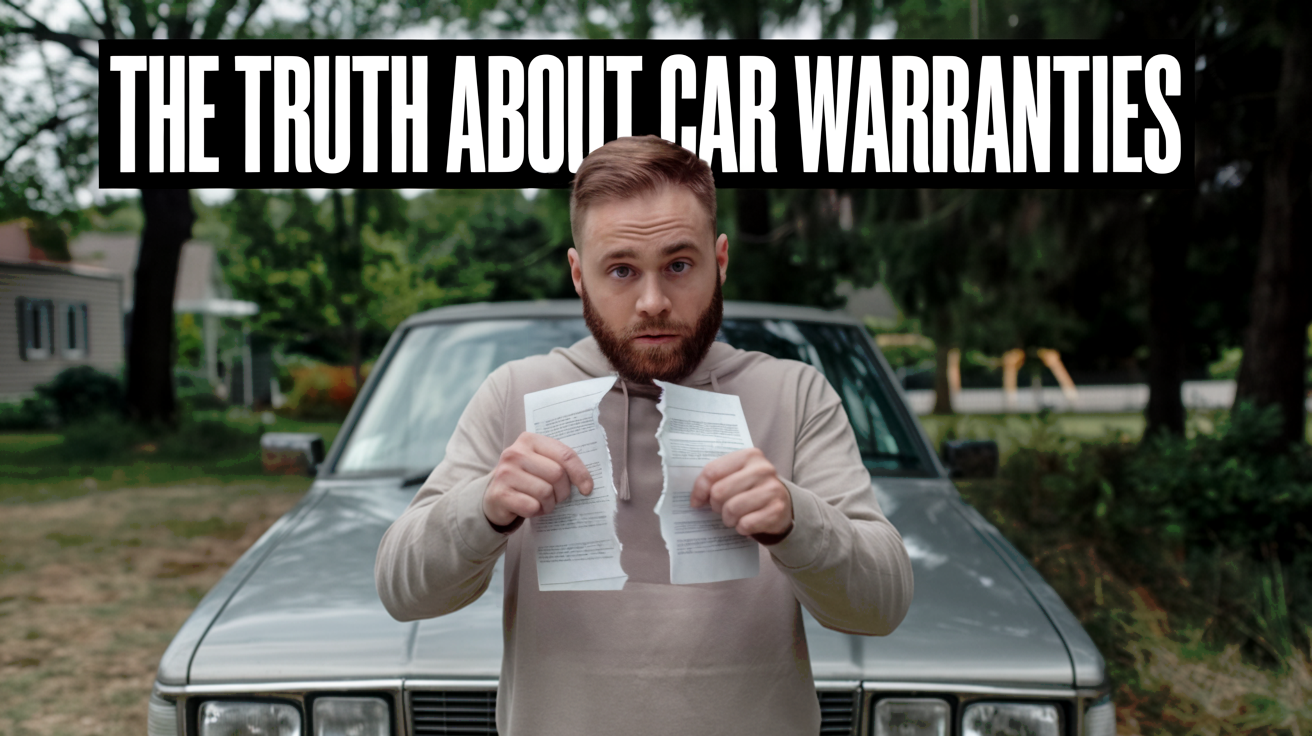Your dealer’s extended warranty pitch sounds tempting, but before you sign on the dotted line, you should know what’s really behind that sales talk. When you’re sitting in that dealership office, the warranty might seem like a smart protection for your new vehicle, but experts warn it often hides costly truths that affect your wallet. The dense contracts require expertise in both law and mechanics to fully understand.
Most buyers end up paying for coverage they never use or that denies their claims.
8. The Extended Warranty Pitch

Let’s face it—extended warranties are everywhere in the car buying game. Dealers hit you with them just when you think the paperwork’s done, while your phone keeps ringing with offers long after you’ve driven off the lot. These plans promise to save your wallet when things break down after the factory warranty calls it quits.
Look under the hood of these contracts and you’ll spot big differences in what you’re actually getting. Most give you a 24-hour cooling-off period to back out if you get buyer’s remorse. Dealer warranties usually cover more stuff than the aftermarket ones but cost a pretty penny more. Third-party plans often force you to use their repair shops or front the cash yourself while they take their sweet time reimbursing you. The real kicker? When your claim gets denied despite having that fancy warranty, you’re stuck with both the repair bill and the bitter taste of paying for protection that vanished when you actually needed it.
7. Salesman’s Incentive: High Commissions

Ever wonder why that warranty salesperson won’t take no for an answer? Follow the money. The folks pushing these plans pocket a hefty chunk of what you pay—often 40-50% of the entire price tag. That explains why that “absolutely final offer” magically drops another $200 when you head for the door.
The commission setup varies depending on who’s selling. Manufacturer plans usually pay salespeople less than the third-party outfits do. This cash incentive explains why they lay the drama on thick about catastrophic repairs instead of talking about actual breakdown statistics. For many dealerships, the finance office makes more money selling warranties than arranging your car loan. Here’s an insider tip: knowing about these fat commissions gives you serious bargaining power—most shoppers can knock 20-30% off the asking price while the dealer still makes plenty on the deal.
6. Limited Coverage and Loopholes

Warranty contracts are packed with escape hatches that let companies wiggle out of paying for repairs. The standard fine print cuts out anything remotely maintenance-related—filters, fluids, belts, hoses—even if they’re causing bigger problems. Many contracts pull this neat trick where parts need to cause a “total system meltdown” before they’ll cough up a dime.
The technical mumbo-jumbo creates more headaches when filing claims. Many contracts use this circular logic where they won’t cover parts damaged by non-covered parts—a clever trap that’s hard to escape. Most demand proof of regular maintenance with records that would impress an IRS auditor. Electronic gizmos—the things that break most on modern cars—often get skimpy coverage periods. Miss just one oil change by a few hundred miles, and your entire warranty can go up in smoke, even if your claim has nothing to do with oil changes.
5. The Fine Print Nightmare

Trying to make sense of warranty paperwork is like decoding an ancient scroll written in automotive hieroglyphics. These contracts blend car-speak with legal jargon that determines whether you’re covered or out of luck. Your average warranty runs a mind-numbing 20+ pages of dense text that would put a law school textbook to shame.
Warranty paperwork has gotten increasingly painful over the decades. Back in the ’80s, these things were a manageable 5-7 pages. Today’s versions regularly hit 25+ pages with extra attachments that nobody actually reads. The language pulls a Jekyll and Hyde act between sections—covered items get super-technical descriptions while the exclusions are conveniently broad and vague. Maintenance requirements often hide in completely different sections from the coverage details, making it easy to miss crucial fine print. Tackling one of these contracts requires the patience of a saint, the vocabulary of a master mechanic, and the legal savvy of a courtroom veteran—a rare combo for someone who just wants their car fixed.
4. Risk of Third-Party Provider Bankruptcy

The warranty world has a graveyard full of companies that left customers high and dry. Big names like US Fidelis, National Warranty Insurance, and American Warranty Corporation went belly-up with thousands of active contracts still on the books. Unlike actual insurance, these warranties have no state guaranty funds to bail out customers when companies crash and burn.
Financial stability varies wildly between providers. Companies hawking direct-to-consumer warranties without established repair networks tend to fold faster than those backed by manufacturers and dealership networks. The industry has a revolving door of new companies popping up and disappearing every 3-5 years. State rules are all over the map—some make warranty companies keep cash reserves while others barely regulate them at all. The brutal reality? When these companies go under, all you’ll get is a bankruptcy notice in the mail while those thousands you paid for “peace of mind” evaporate into thin air.
3. The Better Alternative: Save for Repairs

The numbers don’t lie—DIY repair funds beat warranties for most cars hands down. Stashing away the same cash you’d blow on a warranty builds a solid repair cushion for most folks. Real-world repair stats show 75-80% of drivers spend way less fixing their cars than they would have paid for warranty coverage over the same period.
The financial upside goes beyond just the direct savings. Your repair fund earns interest while warranty payments disappear forever if unused. Independent shops typically charge 30-40% less than dealerships for the exact same fixes—options that warranty fine print often blocks. You’ll find those maintenance-related repairs that warranties conveniently exclude become totally manageable with your own repair fund. Setting up an automatic monthly transfer of just $75-100 builds your repair safety net while keeping you in the driver’s seat on choosing your mechanic, parts quality, and when to schedule service.
2. When an Extended Warranty Might Be Worth It

Not all warranties are money pits—some actually make sense for certain rides. Those fancy European luxury cars with more computers than NASA and specialized parts can rack up repair bills that make warranty premiums look like pocket change. Cars sporting air suspension systems, complicated engine computers, or proprietary tech have higher breakdown rates than your average sedan.
Repair history shows warranties paying off big-time for specific brands like Range Rover, BMW 7-Series, Mercedes S-Class, and Audi A8 models. Factory-backed plans deliver the most bang for your buck by giving you access to dealer service departments with factory-trained techs and genuine parts. Brand-new models without a track record make decent warranty candidates until the bugs get worked out. For these high-end machines, a single glitch in the navigation system can set you back $2,500-3,000—instantly making that premium warranty worth every penny.
1. An Ounce of Prevention…

The car you pick determines your repair bills more than any warranty ever will. Decades of reliability data show consistent patterns across brands and models that rarely lie. Toyota and Honda consistently need 45-60% fewer repairs than average across nearly every vehicle category—a track record that speaks volumes.
The connection between initial quality and long-term reliability is no coincidence. Cars that score well in first-year quality surveys typically keep that advantage throughout their lifespans. Models that stick with proven designs rather than radical overhauls generally cause fewer headaches for owners. You might be shocked how mechanical simplicity still predicts fewer problems despite all the fancy tech packed into modern vehicles. Doing your homework before signing on the dotted line provides better financial protection than any warranty sales pitch, potentially saving thousands over your car’s lifetime while eliminating those middle-of-nowhere breakdown nightmares entirely. Sytay away from the worst performance cars.






























